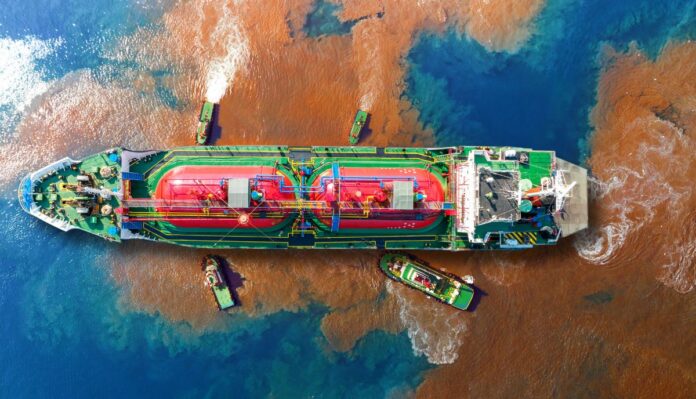Water, the source of life, is an element that sustains our existence, nourishes our bodies, and forms the cornerstone of civilizations. In the United States, clean water access is considered a fundamental right, promising a better future for all.
Despite this noble aspiration, the nation has been witness to a series of water contamination disasters. These disasters have shaken communities, posed significant health risks, and exposed the vulnerability of our water systems.
In this article, we will discuss seven unforgettable water contamination disasters that have left enduring marks on America’s history and consciousness.
The Woburn Water Contamination
One of the earliest documented instances of water contamination in America took place in Woburn, Massachusetts, in the 1960s and 1970s. Yahoo! News notes that this tragic story came to national attention through the book and subsequent movie “A Civil Action.”
The contamination was linked to two industrial facilities, W.R. Grace and Beatrice Foods, which released toxic chemicals into the local groundwater. As a result, the city’s drinking water became contaminated with trichloroethylene (TCE) and perchloroethylene (PCE), both known carcinogens.
The consequences were devastating, with residents experiencing a staggering increase in health issues, including cancer, birth defects, and developmental problems. It wasn’t until the 1980s that the link between contaminated water and these health issues was established, and legal action was taken.
The Woburn case serves as a sobering reminder of the importance of rigorous industrial regulations and efforts to protect water sources and public health.
The Flint Water Crisis
In the early 2010s, the city of Flint, Michigan, became synonymous with water contamination in the modern era. According to Bridge Michigan, the Flint water crisis began when the city switched its water supply source to the Flint River. The water of the Flint River was highly corrosive, causing lead to leach from aging lead pipes and plumbing into the drinking water.
The consequences were catastrophic. Thousands of residents, including a significant number of children, were exposed to dangerously high levels of lead, resulting in long-term health issues. The majority of affected residents in the Flint water crisis were from low-income and predominantly African-American communities.
Ongoing efforts to enhance Flint’s water quality serve as a reminder of the severe consequences that arise from neglecting essential water infrastructure.
The Camp Lejeune Water Contamination
Camp Lejeune, a military base in North Carolina, became the site of one of the most extensive military water contamination disasters in American history. For several decades, from the 1950s through the 1980s, the base’s drinking water supply was contaminated with various toxic chemicals. According to the ATSDR, the toxins included colorless chemicals like trichloroethylene (TCE), perchloroethylene (PCE), and benzene.
This contamination led to numerous health problems among service members and their families stationed at Camp Lejeune. The list of illnesses includes a significantly higher incidence of cancer, birth defects, and other serious illnesses. The government’s initial reluctance to acknowledge the extent of the problem and its impact on military personnel added to the tragedy.
In response to this catastrophe, affected individuals and their families have taken significant legal action. The Camp Lejeune lawsuit is perhaps the biggest step towards seeking accountability and justice for those who suffered due to the water contamination. These lawsuits seek compensation for the suffering caused by the water contamination.
TorHoerman Law notes that these efforts have been made to provide healthcare and compensation to affected individuals and their families through these legal actions. The Camp Lejeune water contamination will continue to persist as a dark episode in the history of American military and environmental negligence. At the same time, the Camp Lejeune lawsuit will continue to serve as a testament to the determination of those affected.
The Deepwater Horizon Oil Spill
The Deepwater Horizon oil leak in the Gulf of Mexico in 2010 was one of the worst environmental catastrophes in US history. Over the course of many months, the disaster resulted in the discharge of millions of barrels of crude oil into Gulf waterways.
This disaster had far-reaching implications for marine life, coastal ecosystems, and the lives of countless people who relied on the Gulf’s resources. The environmental impact was staggering, with devastating effects on marine life, coastal ecosystems, and the fishing industry. The Deepwater Horizon oil spill was a wake-up call for the oil and gas industry, highlighting the need for rigorous safety measures.
The Love Canal Disaster
The Love Canal disaster in the late 1970s was a defining moment in the history of environmental contamination. This neighborhood in Niagara Falls, New York, was built on a former toxic waste dump.
The toxic chemicals, including benzene and dioxins, began leaching into the ground and contaminating the water supply. Residents experienced alarming rates of health issues, including high cancer rates and birth defects.
This disaster prompted the passage of the Comprehensive Environmental Response, Compensation, and Liability Act (CERCLA) in 1980. Otherwise known as Superfund, this act allows for the cleanup of hazardous waste sites.
The Erin Brockovich Story
Hinkley, California, gained national attention through the legal battle brought to light by Erin Brockovich. The town’s groundwater was contaminated with hexavalent chromium (chromium-6), a carcinogenic chemical used by the Pacific Gas and Electric Company (PG&E).
The contamination led to numerous health issues among residents. Erin Brockovich’s efforts to expose this water crisis resulted in a landmark settlement against PG&E. It also brought attention to the importance of corporate accountability in protecting public health.
The Hoosick Falls Tragedy
In 2014, Hoosick Falls, a small village in upstate New York, experienced water contamination. The drinking water was found to be contaminated with perfluorooctanoic acid (PFOA), a toxic chemical used in industrial processes. The contamination was traced to a local plastics manufacturing plant.
Residents experienced health concerns, including high cholesterol levels and cancer rates. The crisis highlighted the need for better regulation of industrial chemicals and a swift response to protect local communities.
Final Word
The harrowing tales of water contamination disasters in America demonstrate the far-reaching consequences of environmental neglect, inadequate regulation, and corporate indifference. These events are not just isolated incidents but cautionary tales of the enduring importance of safeguarding our water resources and public health.
They underscore the need for rigorous oversight, corporate accountability, and swift responses to protect vulnerable communities. Clean water access is not just a fundamental right but an ongoing commitment that requires unwavering dedication to ensure the well-being of the public.

